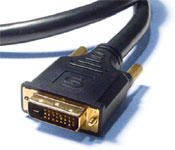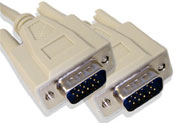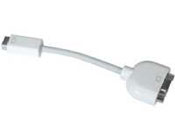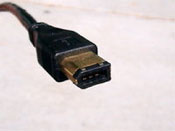Resource Guide Homepage
Resource Guide Homepage
Connections and Cables
Connections and cables are devices for moving analog and digital data in and out of the computer. Some are computer specific and others come from traditional AV connection types.
Balanced and Unbalanced Audio
Balanced connections are used in pro environments because the twisted-pair structure of a balanced cable reduces potential noise interference. Unbalanced is by far the more common. These connections can use the same RCA cable and connector used in home video and audio equipment, and also commonly seen connecting to a computer with 1/8? mini connector, like those found on headphones for MP3 players.
HDMI (High-Definition Multi-media Interface) is an industry-supported, uncompressed, all-digital audio/video interface. HDMI is a descendant of DVI (Digital Visual Interface).
DVI (Digital Visual Interface) is a video connector designed to maximize the visual quality of digital display devices such as flat panel LCD computer displays and digital projectors.
VGA is an analog cable commonly used to connect a computer to a display. VGA accomodates a screen resolution of 640 x 480 pixels. Other resolutions include SVGA = 800 x 600; XGA = 1024 x 768; WXGA = 1280 x 768 (widescreen display); SXGA = 1280 x 1024; UXGA = 1600 x 1200.
DVI to VGA adaptor: Most older projectors only have VGA inputs, while many new computers are only equipped with a DVI output. A DVI to VGA adaptor is a common connector used (especially for Macintosh users) to remedy this incompatibility.
USB (Universal Serial Bus) is a common interface for connecting external devices to computers. USB cables can be daisy-chained together from one origin at the computer to connect multiple devices.





